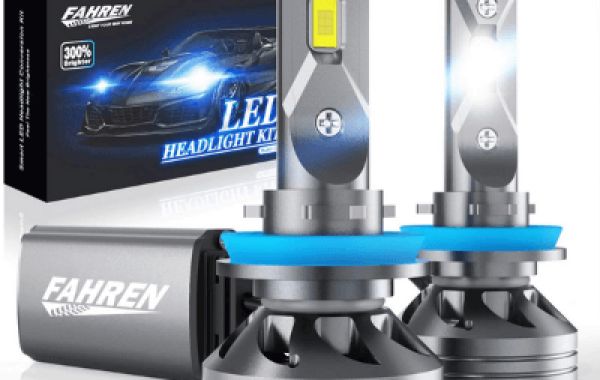Need car headlight bulbs?
To begin with, let's take a look at what kind of headlight bulbs there are.
First of all, bulbs for the car can be divided into 2 main types:
Headlight bulbs - they are installed in the front headlights of the car.
Auxiliary light bulbs - these include parking lights, parking and cabin lights, stop lights.
Each type of lamp has its own designations and connection standards (e.g. H1, H3, H4 - designations for lamps containing halogen gases).
Secondly, according to the purpose of the front bulbs are divided:
High/high beam bulbs - the main illumination of the road surface in front of the car. They are components of a headlamp, switchable when necessary to illuminate the far/nearest parts of the road.
Fog lamps - are installed in the headlights. The light from the headlights kind of flies down the road, not illuminating the fog by height. They are used in heavy weather conditions (fog, rain, snowfall). Not only they help a driver to orient himself better on the road in bad weather, but also increase visibility of the vehicle for other traffic participants.
Third, the division by design:
Incandescent car lamps are the oldest type of lamps. We can say obsolete.
Halogen (halogen) lamps - is an incandescent lamp, in the bulb of which there is a buffer gas (halogen vapors - bromine or iodine). They are characterized by a long service life. The most common type of lamps used in car headlights. Constantly being refined to get a greater intensity of light and increase the radius of illumination in front of the car.
Xenon lamps - consist of a bulb with a gas (xenon) and electrodes. They glow thanks to an electric arc that is created by applying a voltage. The light that the xenon lamp emits is white, close to the spectrum of daylight, and bright (the intensity is 3 times higher than that of halogen lamps). Bright, energy efficient, and long-lasting lamps. Comfortable for the driver's eyes, but can be excessively bright for other road users.
LEDs - Consisting of multiple light-emitting diodes (LEDs). The light emitted is close to daylight. Consume less electricity compared to halogen and have a very long life. Operates without wear and tear for long periods of use. Thanks to their small size, they open up a wide range of design possibilities. However, in winter, the luminous flux of LED bulbs is significantly reduced.
WHAT YOU NEED TO KNOW ABOUT HEADLIGHT BULBS BEFORE REPLACING
1.The basic rule to remember if you're planning on replacing headlight bulbs is that headlight bulbs should be replaced in pairs.
There are good reasons for this:
The bulbs were installed together at the same time, which means that since one has burned out, the death of the other is just around the corner.
If you decide to keep the second and replace only one in order to save money, you will break the light distribution pattern, because the new bulb will always shine brighter than the one that has already worked a lot.
2. Going to the store for new bulbs in the headlights, take with you the old. This way you will be easier to find similar and eliminate the risk of buying the wrong bulbs. However, do not forget to study the inscriptions on the packages.
3. To continue the topic about the packaging: check whether there is a sign of conformity. This is a must, if the product is of good quality (which it needs to be). If you saw the inscription Offroad use only ("use only outside the public roads") or Not for use in Europe ("Not for use in Europe"), then such a lamp is skipped - they are prohibited for use in Russia.
4. The inscription +50% Light or Beam Performance +60% on the package promises you that some points in front of the car will be better lit compared to the capabilities of conventional lamps. However, remember that the additional effects reduce the life of the bulbs, which means that they will be replaced sooner.
5. White and yellow light bulbs and inscriptions like 2600 K. Here the benchmark for comparison is the daytime color temperature, which is within 4000-6500 K.
The value on the package is close to it - the light emitted by the lamp is similar to daylight. It is comfortable and familiar, creates less strain on the eyes, in it objects are clearer. However, in rainy weather or fog, visibility drops dramatically, because white light is reflected by water droplets.
The value on the packaging below 3000 K - you have a yellow light bulb. They are effective in bad weather, although in good weather conditions are not as convenient. In this regard, install them in fog lights, but not in headlights.
If the bulb is colored, most likely it is a purely aesthetic decision - the light will be white. In some cases, the bulbs are painted blue to increase the color temperature.
6. There is no indication as to the life of the bulb in the headlight? The standard lifetime at 13.2 V is considered to be:
for halogen lamps - 600 hrs,
for discharge lamps (xenon lamps) about 3,000 hours,
for light-emitting diodes (LED) - 10 000 h,
for organic light-emitting diodes (OLED) - 30,000 hours.
Excessive voltage reduces the life of the bulb (e.g. a voltage increase of 5% results in a 40% reduction in the life of the bulb). However, the luminous flux will be stronger. At low voltage, the situation is the opposite.
7. The original bulb was 60/55W, but only the more powerful 100/90W was available. Is it worth buying it, and does it give more light? No, bigger is not better. Unless you want the experiment to end in a fire because of the excessive load on the wiring.
8. Are the xenon bulb and the halogen bulb in headlights marked with an intense white effect similar? Both of them emit pure white light but they are different - Halogen bulbs shine better.
HEADLIGHT BULB REPLACEMENT
If your headlights don't turn on, you usually don't need to completely remove or replace your headlights to restore them to working order. The process itself of replacing a headlight bulb and the sequence of steps may differ depending on the car model, but often enough to unscrew a few mounting bolts and a little time. For example, replacing headlight bulbs is as follows: unscrew the bolts, remove the headlight (you can remove without pulling the connector) or pull the headlight without removing the entire unit to get to the bulb, gently unscrew or press the special plug to separate the bulb, install a new light element.
The main difficulty in the process of replacing the bulb in the headlight is the design of the car, which does not allow unhindered access to the bindings and the bulb itself. Sometimes it is necessary to remove other parts of the car to make the replacement. Also, some parts are too tight, so not everyone can do the job (mostly girls) or there is a risk of damaging parts with excessive force (especially if that force is not needed there). In this regard, sometimes it is easier to go to the car service than to spend time to understand the nuances of the process, in addition, the service is inexpensive, and the professionals will take a little time.
Source: https://fahrenled.org/








